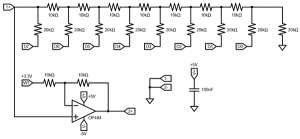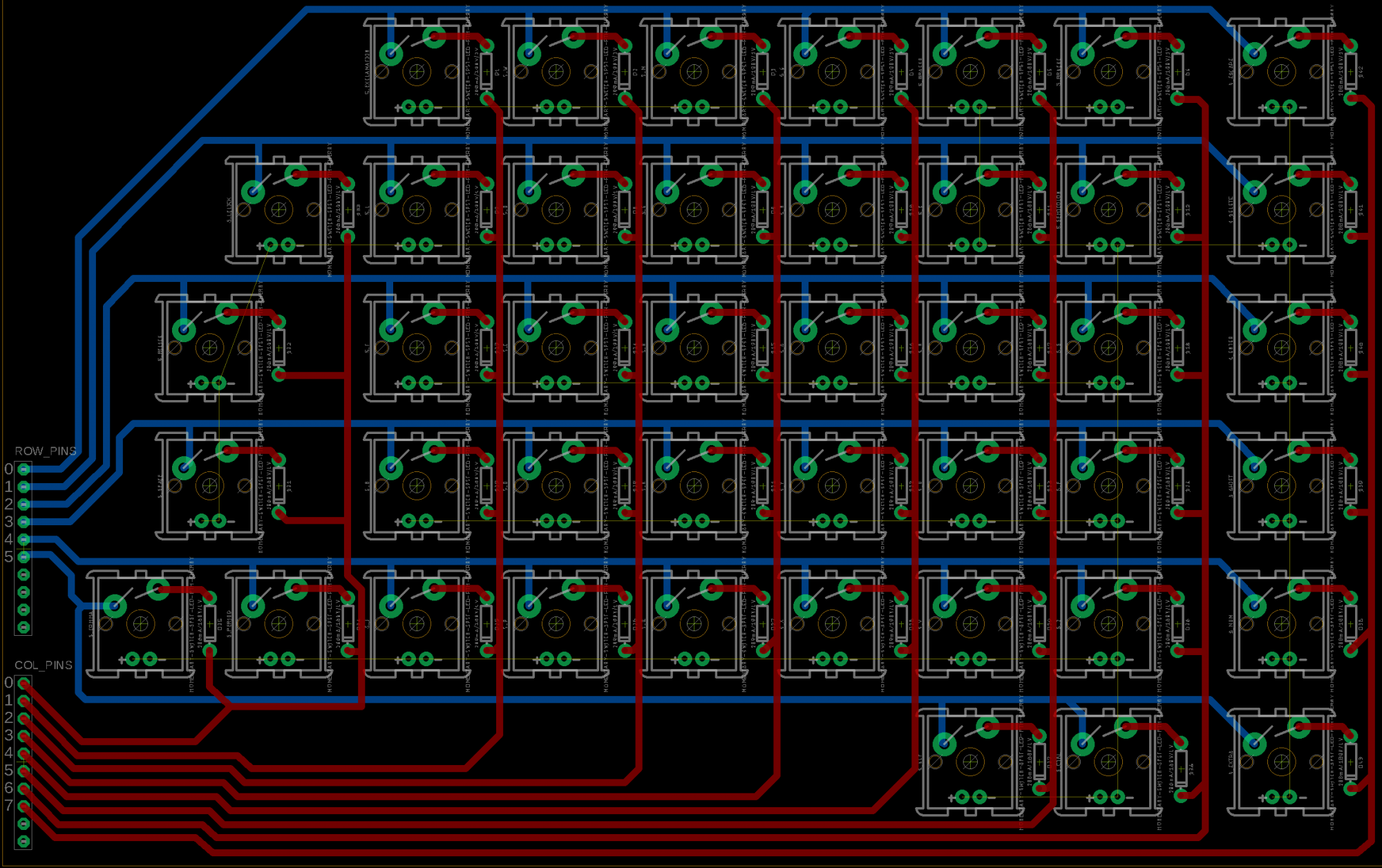On Monday, we looked at keyboard circuits. Basically, how does the Raspberry Pi detect each key when you press it?
The one my teammates proposed was a matrix keyboard, and I proposed a series of cascading resistors.
With a cascade resistor keyboard, each key in a row is mapped to a resistor switch, doubling each time. For example, the leftmost might have 100 ohms, the second on the left has 200, then 400, etc. so that the voltage difference across the row would change every time a key is pressed. The keys have different resistances so that the Pi can detect multiple key presses simultaneously and interpret the analog voltage drop as a binary bitvector.
Or at least, that’s what I remember. This is a digital to analog converter from Microelectronic Circuits, which does what I wanted. Every combination of digital inputs will change the voltage in a discretely unique way, which can then be interpreted on the Pi as a digital signal via an analog to digital converter.

This seems to work, but we haven’t seen this work in other keyboards, so we’re going with the matrix keyboard. I’ll leave this here as a backup.
To see how a matrix keyboard works, see the team status report.
I researched matrix layouts to see if I could build them, and I can say with several degrees of confidence that I can.
